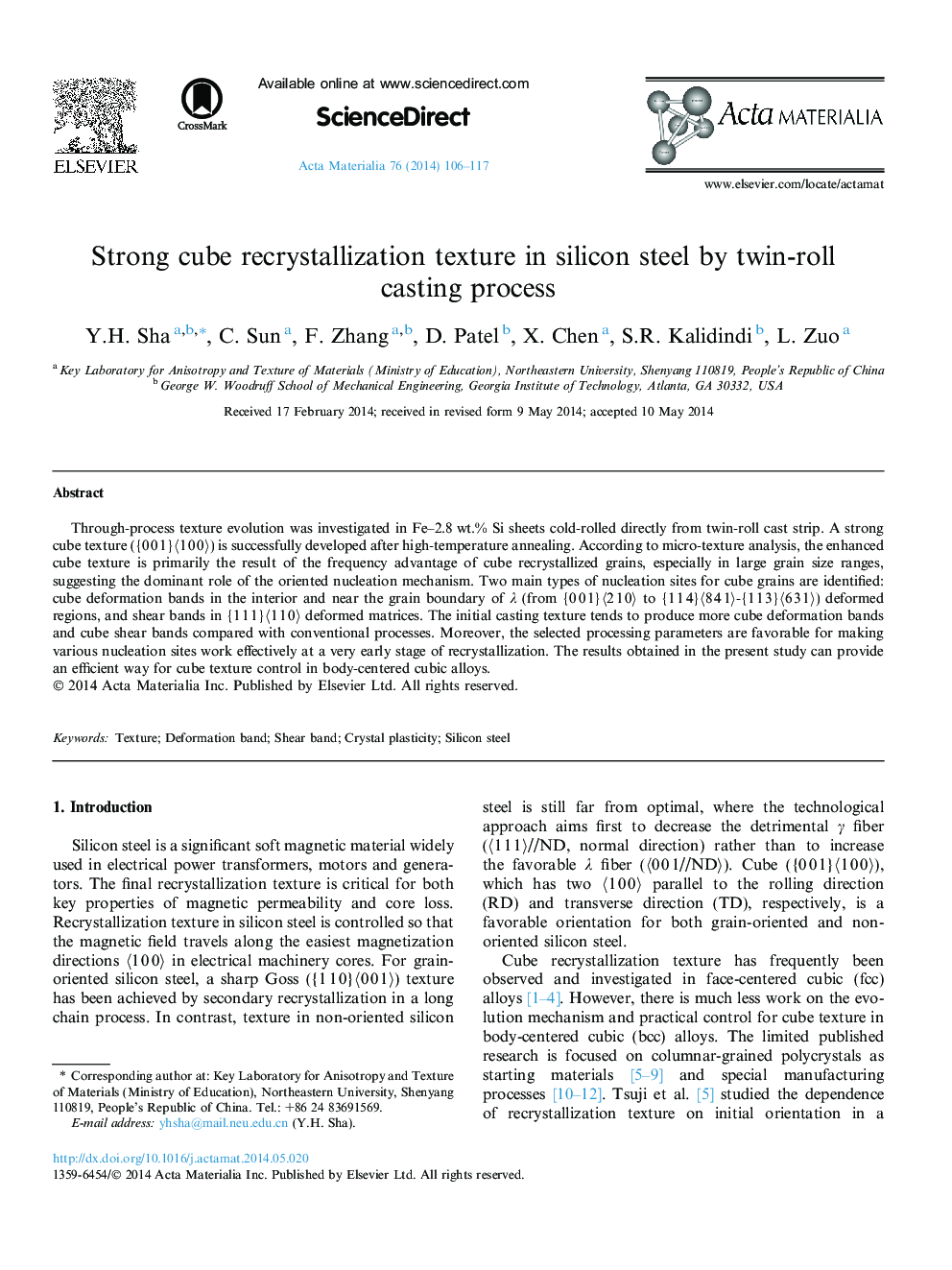| Article ID | Journal | Published Year | Pages | File Type |
|---|---|---|---|---|
| 7881572 | Acta Materialia | 2014 | 12 Pages |
Abstract
Through-process texture evolution was investigated in Fe-2.8 wt.% Si sheets cold-rolled directly from twin-roll cast strip. A strong cube texture ({0 0 1}ã1 0 0ã) is successfully developed after high-temperature annealing. According to micro-texture analysis, the enhanced cube texture is primarily the result of the frequency advantage of cube recrystallized grains, especially in large grain size ranges, suggesting the dominant role of the oriented nucleation mechanism. Two main types of nucleation sites for cube grains are identified: cube deformation bands in the interior and near the grain boundary of λ (from {0 0 1}ã2 1 0ã to {1 1 4}ã8 4 1ã-{1 1 3}ã6 3 1ã) deformed regions, and shear bands in {1 1 1}ã1 1 0ã deformed matrices. The initial casting texture tends to produce more cube deformation bands and cube shear bands compared with conventional processes. Moreover, the selected processing parameters are favorable for making various nucleation sites work effectively at a very early stage of recrystallization. The results obtained in the present study can provide an efficient way for cube texture control in body-centered cubic alloys.
Related Topics
Physical Sciences and Engineering
Materials Science
Ceramics and Composites
Authors
Y.H. Sha, C. Sun, F. Zhang, D. Patel, X. Chen, S.R. Kalidindi, L. Zuo,
